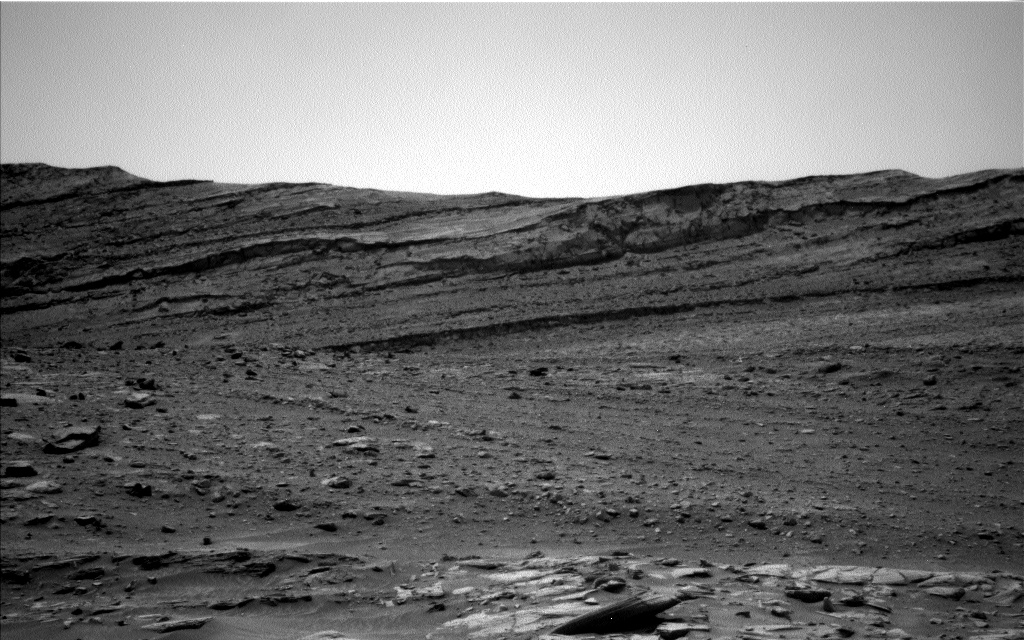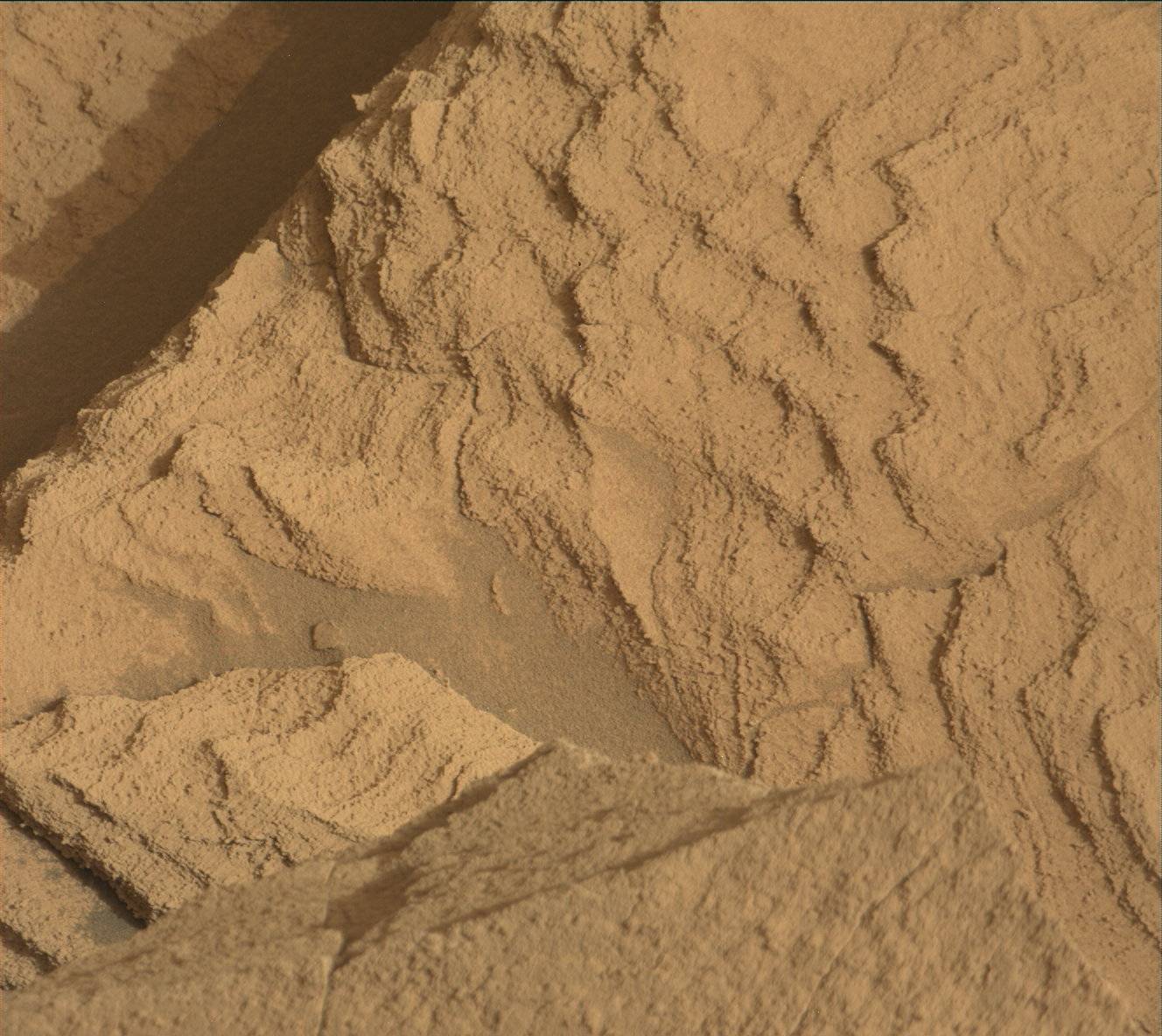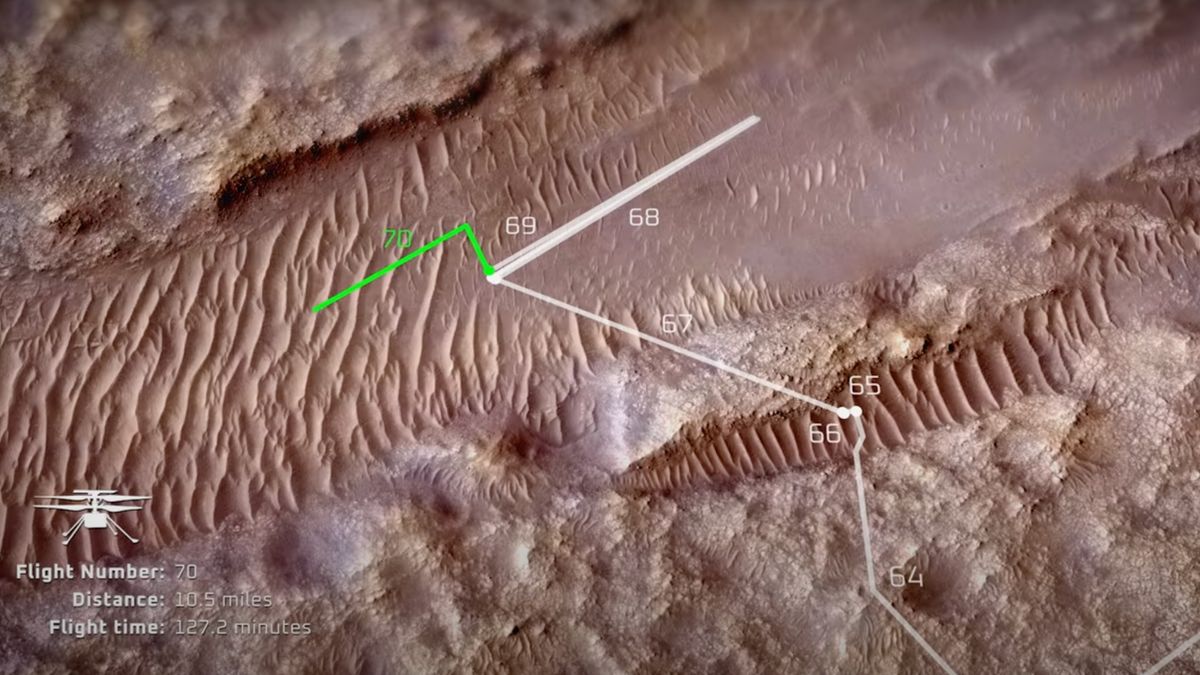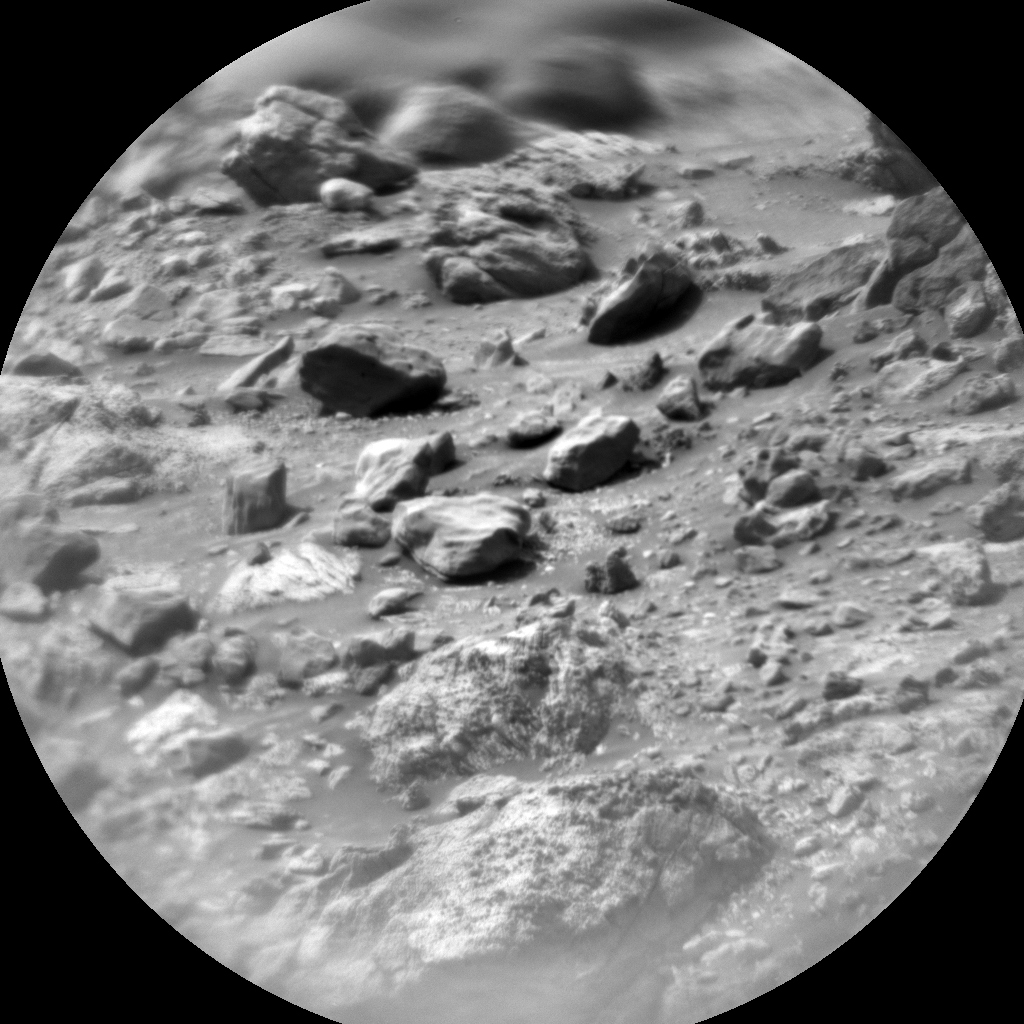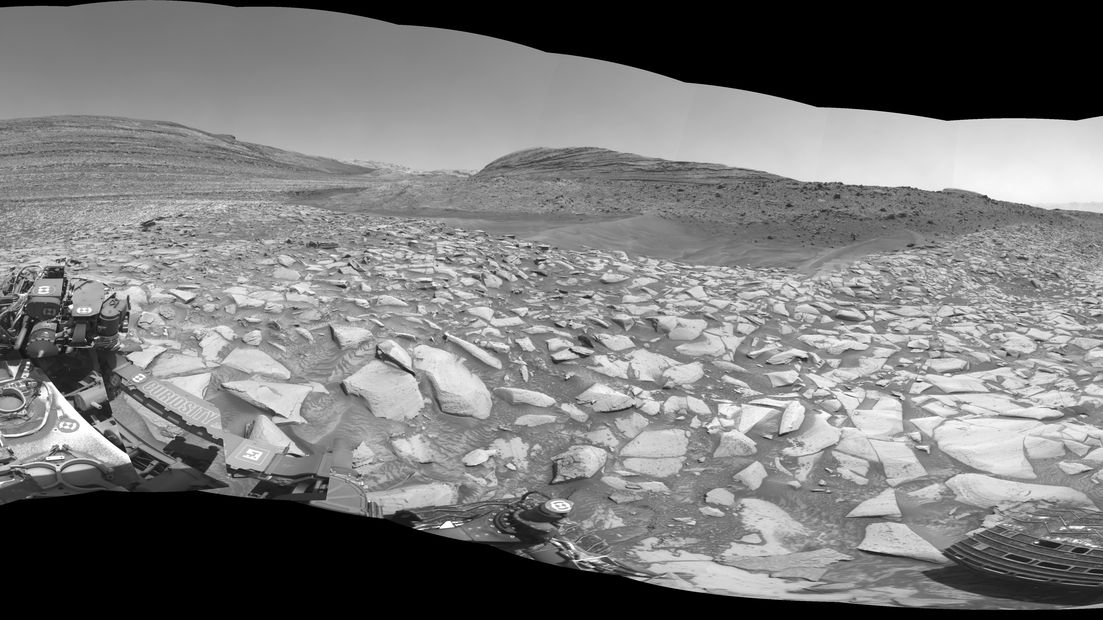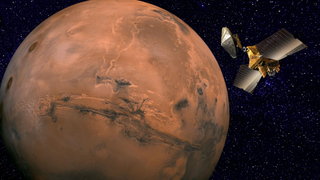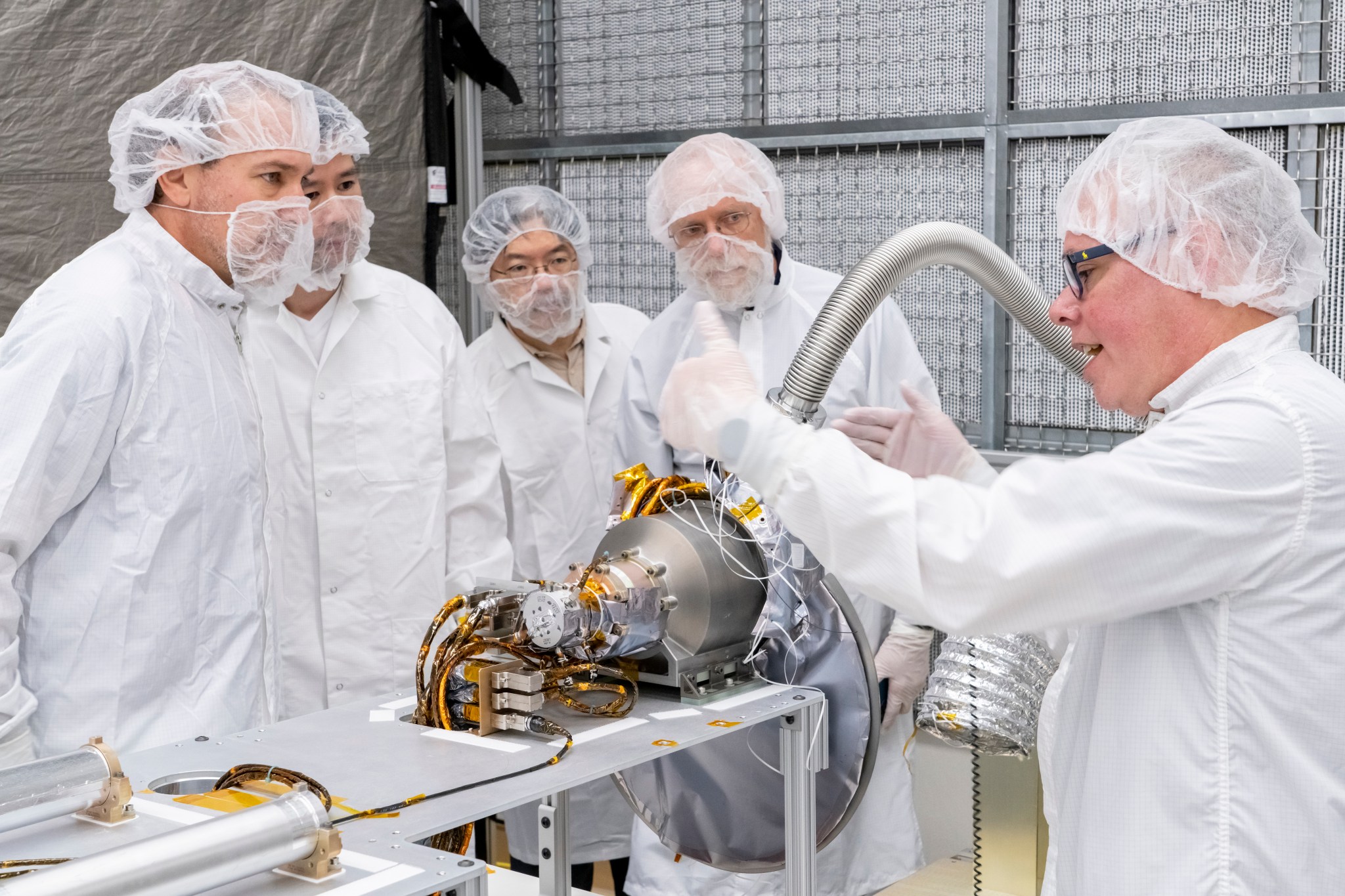2 min read Sols 4164-4165: What’s Around the Ridge-bend? This image was taken by the Left Navigation Camera and looks towards the deposits that make up the bend in Gediz Vallis ridge between “Pinnacle Ridge” and “Fascination Turret”. In the background is the layered stratigraphy that makes up the butte “Texoli”. NASA/JPL-Caltech Earth planning date: Monday, April 22, 2024 Curiosity succeeded on a ~14 m drive along a bend in upper Gediz Vallis ridge (uGVR) to park next to “Pinnacle Ridge,” an outcrop of uGVR to the north. Benefitting from…
Read MoreTag: Mars
Sols 4161-4163: Double Contact Science
2 min read Sols 4161-4163: Double Contact Science This image was taken by Mast Camera (Mastcam) onboard NASA’s Mars rover Curiosity on Sol 4159 (2024-04-18 13:24:29 UTC). NASA/JPL-Caltech/MSSS Earth planning date: Friday, April 19, 2024 Curiosity has a three-sol weekend plan coming up as it makes progress along the edge of upper Gediz Vallis ridge. We have observations planned to investigate multiple bedrock targets with interesting rippled textures, dark-toned float, and the ridge. With two contact science targets, lots of targeted and untargeted remote observations, and a drive scheduled, Curiosity…
Read MoreIngenuity’s travels: New NASA video tracks Mars helicopter’s 72 flights
NASA’s history-making Ingenuity helicopter covered a lot of ground on Mars over the past three years, as a new video shows. The video, which was released on Thursday (April 18) by NASA’s Jet Propulsion Laboratory (JPL), shows where Ingenuity went on each of its 72 Red Planet sorties, linking each flight line together in an otherworldly Etch a Sketch creation. This work of art throws Ingenuity’s epic achievements into stark relief, showing the tough terrain the 4-pound (1.8 kilograms) chopper negotiated and the impressive distance it traveled — 10.5 miles…
Read MoreSols 4159-4160: A Fully Loaded First Sol
3 min read Sols 4159-4160: A Fully Loaded First Sol This image was taken by Chemistry & Camera (ChemCam) onboard NASA’s Mars rover Curiosity on Sol 4158 (2024-04-17 07:52:27 UTC). NASA/JPL-Caltech/LANL Earth planning date: Wednesday, April 17, 2024 Curiosity continues to make progress along the margin of upper Gediz Vallis ridge, investigating the broken bedrock in our workspace and acquiring images of the ridge deposit as the rover drives south. Today’s 2-sol plan focused on a DRT, contact science, and drive on the first sol, followed by untargeted remote sensing…
Read MoreIngenuity team says goodbye to pioneering Mars helicopter
Saying goodbye is never easy, especially from a world away. The Ingenuity Mars helicopter team convened one last time on Tuesday (April 16) to oversee a transmission from the little rotorcraft, the first robot ever to explore the skies of a world beyond Earth. The meeting, in a control room at NASA’s Jet Propulsion Laboratory (JPL) in Southern California, came nearly three months after Ingenuity’s 72nd and final flight. The 4-pound (1.8 kilograms) chopper damaged its rotors while landing that day, consigning it to a stationary existence from now on…
Read MoreNASA’s Ingenuity Mars Helicopter Team Says Goodbye … for Now
NASA’s Ingenuity Mars Helicopter, right, stands near the apex of a sand ripple in an image taken by Perseverance on Feb. 24, about five weeks after the rotorcraft’s final flight. Part of one of Ingenuity’s rotor blades lies on the surface about 49 feet (15 meters) west of helicopter (left of center in the image). NASA/JPL-Caltech/LANL/CNES/CNRS The final downlink shift by the Ingenuity team was a time to reflect on a highly successful mission — and to prepare the first aircraft on another world for its new role. Engineers working…
Read MoreNASA’s Curiosity Mars rover begins exploring possible dried-up Red Planet river
Currently in the twelfth year of its mission, NASA’s Curiosity rover continues to press on while treading the world of Mars, delving into areas no rover has gone before. The latest phase of Curiosity’s adventure has brought it to what some scientists believe is the desiccated bed of an ancient river. As Curiosity prepares to follow Gediz Vallis, as scientists call this winding and boulder-choked channel, it will try to give scientists a look back through time so they can discover how the landform came to be in the first…
Read MoreGiant Mars asteroid impact creates vast field of destruction with 2 billion craters
Over two million years ago, a giant asteroid slammed into Mars, scarring the surface with one massive crater and around two billion smaller individual craters. These secondary craters appear across a region of 1,000 miles (1,800 kilometers), making this asteroid event one of the biggest impacts seen on the Red Planet in relatively recent history. Asteroids massive enough to create widespread destruction like this are estimated to impact Mars just once every 3 million years. The impact occurred at the equator of Mars in a region humanity has named Elysium…
Read MoreDrilling for water ice on Mars: How close are we to making it happen?
Things are looking up for digging deep on Mars. Progress is palpable on how best to extract subsurface ice to generate drinkable water, rocket fuel and other useful resources on the Red Planet. But boring down from the topside of Mars to reach available icy reservoirs is no slam dunk. Tackling that challenge is the company Honeybee Robotics, which calls its approach the RedWater concept. Related: Mars ice deposits could pave the way for human exploration Dual purposes Honeybee Robotics’ ice drilling hardware for Mars encompasses coiled tubing and the…
Read MoreNASA Delivers Science Instrument to JAXA’s Martian Moons Mission
3 min read NASA Delivers Science Instrument to JAXA’s Martian Moons Mission On March 14, NASA delivered its gamma-ray and neutron spectrometer instrument to JAXA (Japan Aerospace Exploration Agency) for integration onto JAXA’s MMX (Martian Moons eXploration) mission spacecraft and final system-level testing. U.S. and Japanese team members gather around and discuss the gamma-ray spectrometer portion of the MEGANE instrument during its development at Johns Hopkins APL. NASA/JAXA/Johns Hopkins APL/Ed Whitman NASA’s Mars-moon Exploration with Gamma Ray and Neutrons (MEGANE) instrument, developed by the Johns Hopkins Applied Physics Laboratory (APL)…
Read More